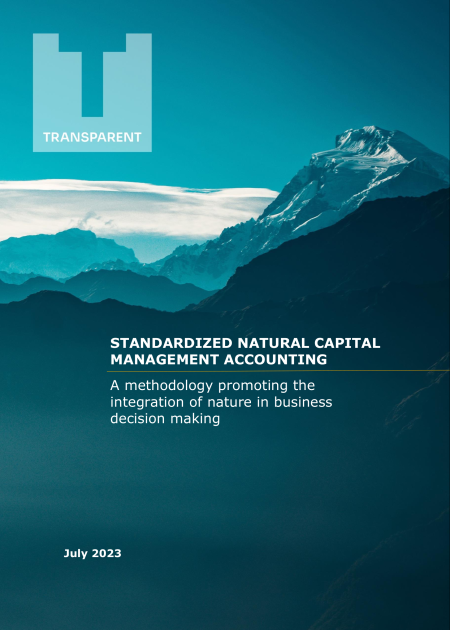
Resource description:
This document aims to provide a standardized methodology for developing a basic set of natural capital management accounts at entity level that can support decision makers in orientating their business towards medium- and long-term environmental sustainability and thus reduce pressures on socio-economic systems. The intention is for this methodology to serve as a means of accounting for pressures or impact drivers on nature and the corresponding positive and negative effects these have on society. By focusing on impact drivers as the fundamental accounting concept of this methodology, we are approximating complex cause-effect phenomena and the interaction of systems that collectively contribute to the state and condition of the biosphere and ultimately human society.
This approach is consistent with established scientific best practice as outlined by the Intergovernmental Science-Policy Platform on Biodiversity and Ecosystem Services (IPBES) or the International Union for Conservation of Nature (IUCN), for example, as well as corporate biodiversity reporting and disclosure best practice such as the Taskforce on Nature-related Financial Disclosures (TNFD), ESRS E4, or GRI 304 standards. The basic hypothesis is that by recognizing, measuring, and reducing the impact driver profile of business activities, positive changes to the environment – whether limiting further degradation or regenerating natural systems – will follow along the line of established impact pathways. It is acknowledged that the concepts of “impact drivers” and “impact pathways” are a means of modeling cause and effect based on science which shows that reducing impact drivers ultimately results in limiting the overall negative impacts industrialization and other human activities have on nature and ultimately society.
Author/Contact:
Value Balancing Alliance, Capitals Coalition, WBCSD